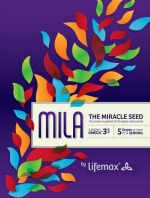Avastin Used For the Treatment of Macular Degeneration
Avastin:
Do you, a parent, or a grandparent have Age Related Macular Degeneration (ARMD)? Have you experienced loss of central vision? Has your loss of vision been rapid?
Wet ARMD is the more visually debilitating type of ARMD, also referred to as Exudative ARMD. This type is characterized by the formation of Choroidal Neovascularization, which is formation of new, fragile blood vessels under the Retina.
These new blood vessels can leak fluid or blood and cause a precipitous loss of central vision. A growing body of evidence suggests that Vascular Endothelial Growth Factor A plays an important role in the development of Neovascularization and the vessel leakage that leads to central vision loss.
Vascular Endothelial Growth Factor A has been observed in increased levels in pigment epithelial cells during the early stages of ARMD as well as in the removed Neovascular Membranes from ARMD patients as well as in the Vitreous of patients with CNVMs.
Like Ranibuzumab (Lucentis®), Bevacizumab (Avastin®; Genentech, San Francisco, California) binds to all isoforms of Vascular Endothelial Growth Factor A, but differs in size. Avastin® is a full-length humanized Anti-VEGF monoclonal antibody that was FDA approved in 2004 for the treatment of metastatic colorectal carcinoma. It is also used as a chemotherapeutic agent in a number of malignancies.
The term monoclonal is used because this type of antibody comes from only one type of cell, making it highly specific to attack a certain target molecule and thus greatly reduce the side effects that would be caused if healthy cells were being attacked also.
What are some of the advantages?
- The biggest advantage is cost. While the cost for Avastin® as part of a chemotherapy regimen is $4,400 per month, so little is used in the eye to treat Wet ARMD patients that the cost to the physician is about $50 per injection. Even with a three-fold markup for your cost as consumer, the cost is about $150.00 per injection, considerably less than the price of Lucentis® injections.
- The off-label use of intravitreal injections of Avastin® for Wet ARMD has occurred since May 2005. Because of remarkably good results, use expanded quickly.
Examples of good results found included:
- An early, nonrandomized trial in patients with Wet ARMD showed highly significant improvement in vision at 4 and 8 weeks following intravitreal injection.
- Several small, randomized controlled trials subsequently showed that intravitreal injection was more efficacious than PDT in improving vision and the incidence of adverse effects was low.
What are some of the disadvantages?
Avastin® vs. Lucentis® choice to treat Wet ARMD and hopefully the results of the CATT study (Comparison of Age-Related Macular Degeneration Treatment Trials) will help settle the debate.





